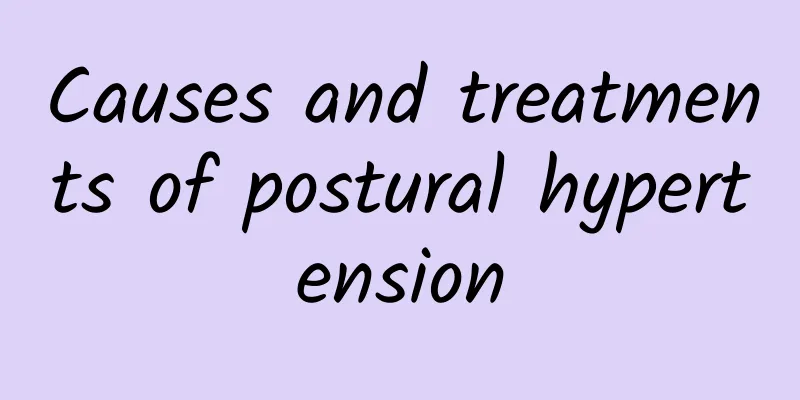Causes and treatments of postural hypertension

|
Hypertension is a very common disease in many people. In clinical practice, postural hypertension is a common classification. So, what are the causes of postural hypertension? Causes of postural hypertension: The mechanism of orthostatic hypertension is generally believed to be related to the overfilling of the "gravity vascular pool" of the veins and venous sinuses. The veins and venous sinuses below the horizontal plane of the human heart will swell when affected by the gravity of the blood. These veins or venous sinuses are called "gravity vascular pools" in medicine. These vascular pools are not affected when a person lies flat, but when standing or sitting, the blood flow back to the heart is reduced due to the excessive blood stagnation in the venous vascular pools in the sagging parts, which reduces the cardiac output, leading to overexcitement of the sympathetic nerves, and the small blood vessels throughout the body, especially the small arteries, are in a state of contraction or spasm for a long time, causing increased blood pressure. Some people are particularly sensitive to this reaction, so they can develop postural hypertension. Treatment of postural hypertension: Another prominent problem with orthostatic hypertension is that its pathogenesis is different from that of general hypertension, so the treatment methods for general hypertension cannot be used to treat orthostatic hypertension. Experiments have shown that the use of diuretics not only cannot lower blood pressure, but will stimulate blood pressure to rise further. Therefore, the treatment of orthostatic hypertension is mainly to strengthen physical exercise and increase the fullness of muscles. Generally, medication is not required. For those with obvious individual symptoms, appropriate amounts of neurological function regulators (such as oryzanol, etc.), central and peripheral nerve nutrition agents (such as brain rehabilitation, vitamins, inosine and related Chinese medicines), and tranquilizers can be taken. Orthostatic hypertension generally has a good prognosis and no long-term adverse consequences. Therefore, if a person is found to have elevated blood pressure during an outpatient examination, it should be determined whether it is orthostatic hypertension to avoid unnecessary or incorrect treatment measures that affect the patient's physical and mental health. |
<<: Just a few simple moves can easily remove calf fat
>>: Eat these when you have a cold and a headache, and you will get better quickly
Recommend
Testicular feminization
Testicular feminization is a very serious male di...
Will I get pregnant if I ejaculate right after I penetrate her?
Many people will be worried if they do not take s...
How to treat Yangwei
Impotence is a common male sexual dysfunction, wh...
What is the best way to treat premature ejaculation?
The life between husband and wife includes many a...
Symptoms of male condyloma acuminatum: I didn’t expect it to be so serious
Condyloma acuminatum is a disease that not only o...
Causes of Pain in the Upper Left Chest of Men
The symptoms of left chest pain are more obvious,...
What are the small fleshy thorns on the edge of the glans?
The glans is a very sensitive and important repro...
What fruits should men eat to nourish their kidneys?
It is inevitable that men will suffer from kidney...
What is the difference between a hydrocele and a hernia?
Hydrocele mainly refers to the accumulation of fl...
Prostatitis symptoms pictures
Prostatitis is a common male disease. More than 5...
Is long-term abstinence harmful to boys?
If men abstain from sex for a long time, it will ...
Why are men more likely to develop tinea cruris?
Tinea cruris is actually a kind of skin disease, ...
Is male impotence a mental illness as well as a physical illness?
For men, erectile dysfunction (ED) refers to the ...
What is the reason for the redness and itching of the foreskin?
We need to pay special attention to hygiene habit...
What kind of tea should men drink to nourish the kidneys? You definitely don't know
For men, decreased kidney function often affects ...









